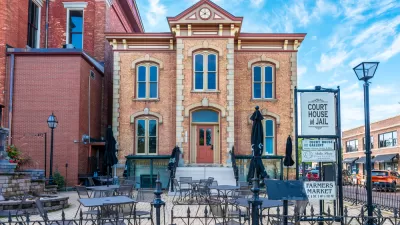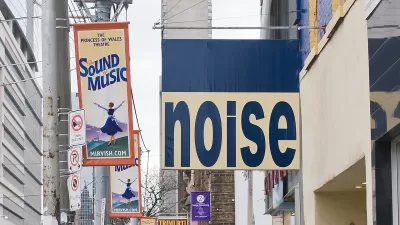The Inclusive Innovation Playbook provides guidance about how to create smart cities without leaving anyone behind.

Chris Teale reports on the release of the Inclusive Innovation Playbook, a tool developed through a partnership between the Smart Cities for All initiative and AT&T. The guidebook seeks to ensure that urban innovation remains accessible to people with disabilities by focusing on five areas: people, economic assets, infrastructure, enabling environment, and networking assets.
"The playbook follows on the heels of a survey by Smart Cities for All that found 60% of global experts said smart cities are failing people with disabilities. In that same survey, a third of respondents were unsure if people with disabilities could use the products and solutions they are developing, while only 43% of respondents said they had a strong understanding of accessibility and inclusion in their products," writes Teale.
It also builds on the Inclusive Innovation for Smarter Cities, a project centered on developing inclusive smart city technology and design. "That project, which rolled out in New York City and Chicago, included roundtable discussions with entrepreneurs and innovation experts to gather information on how cities can foster greater inclusion as they look ahead to smart cities," notes Teale.
FULL STORY: Smart Cities For All playbook focuses on accessibility for people with disabilities

Maui's Vacation Rental Debate Turns Ugly
Verbal attacks, misinformation campaigns and fistfights plague a high-stakes debate to convert thousands of vacation rentals into long-term housing.

Planetizen Federal Action Tracker
A weekly monitor of how Trump’s orders and actions are impacting planners and planning in America.

Chicago’s Ghost Rails
Just beneath the surface of the modern city lie the remnants of its expansive early 20th-century streetcar system.

Bend, Oregon Zoning Reforms Prioritize Small-Scale Housing
The city altered its zoning code to allow multi-family housing and eliminated parking mandates citywide.

Amtrak Cutting Jobs, Funding to High-Speed Rail
The agency plans to cut 10 percent of its workforce and has confirmed it will not fund new high-speed rail projects.

LA Denies Basic Services to Unhoused Residents
The city has repeatedly failed to respond to requests for trash pickup at encampment sites, and eliminated a program that provided mobile showers and toilets.
Urban Design for Planners 1: Software Tools
This six-course series explores essential urban design concepts using open source software and equips planners with the tools they need to participate fully in the urban design process.
Planning for Universal Design
Learn the tools for implementing Universal Design in planning regulations.
planning NEXT
Appalachian Highlands Housing Partners
Mpact (founded as Rail~Volution)
City of Camden Redevelopment Agency
City of Astoria
City of Portland
City of Laramie





























